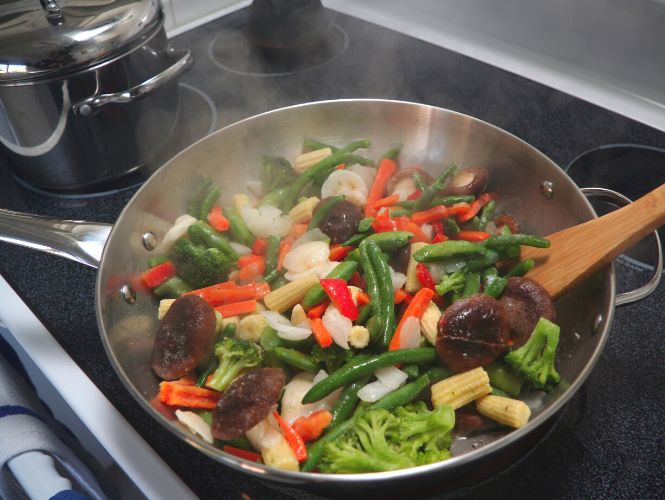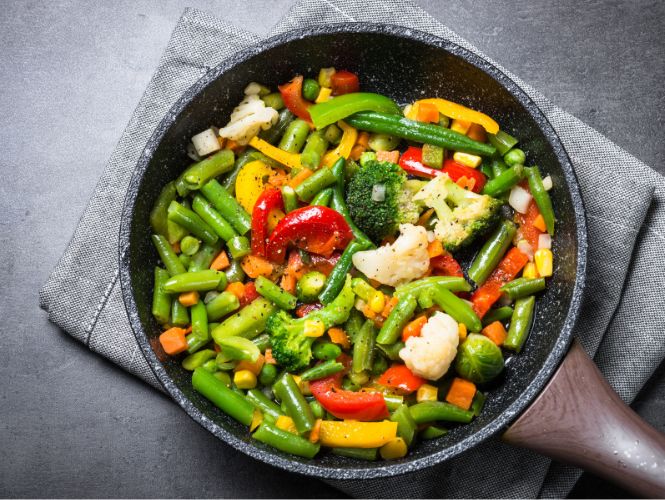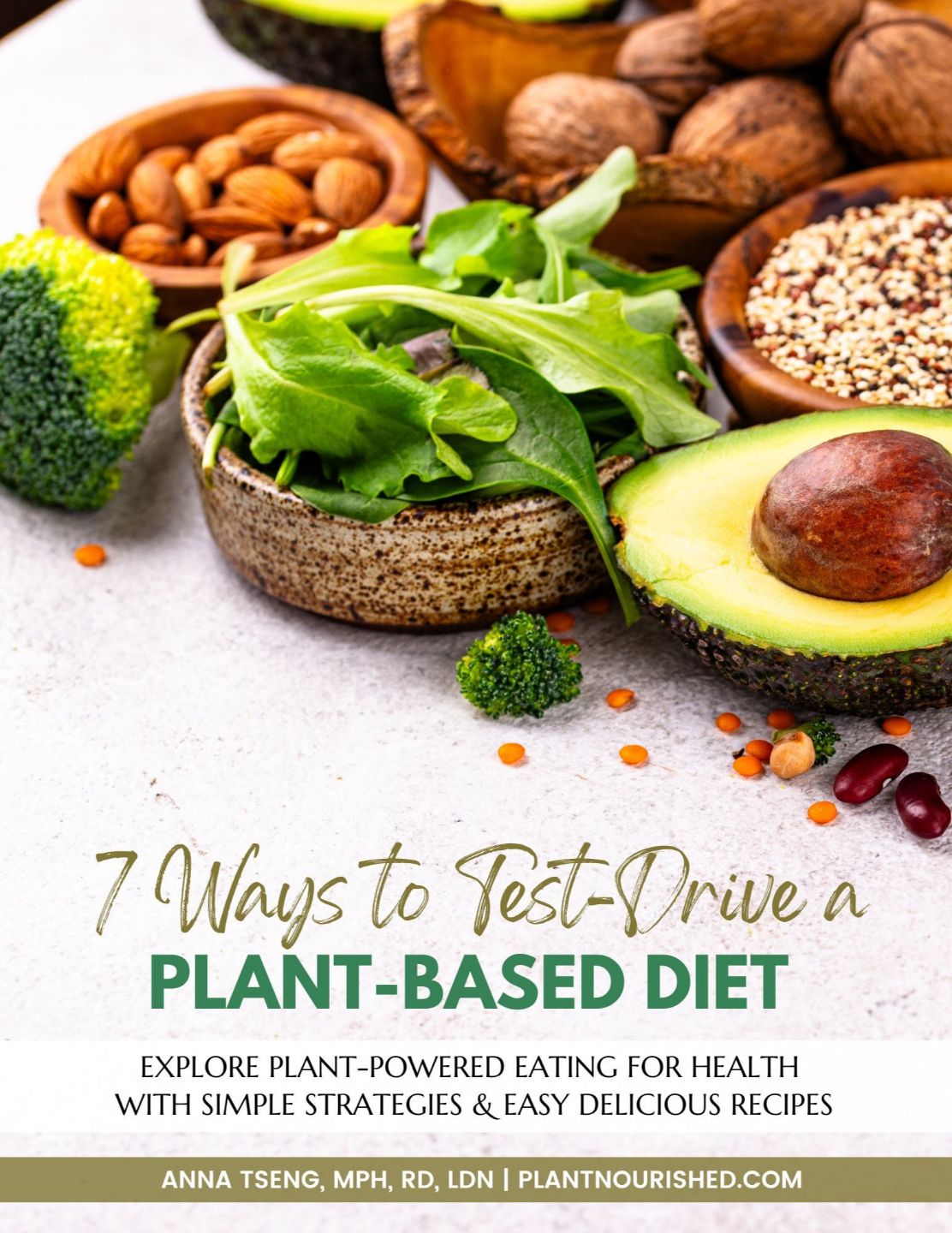Plant-Based Cooking: Top 5 Myths About Stir-Fries Debunked
Oct 16, 2022
Have you ever enjoyed a fancy-looking Asian stir-fried dish at a restaurant and wished you could replicate it at home? Well, it is easier to do so than you think! Yet many shy away from this quick and efficient cooking technique because it seems to be too hard to do. Can you relate? Perhaps like a client of mine, you’ve only ever boiled vegetables, or perhaps you’ve never stepped foot in a kitchen much before, so stir-frying seems too daunting a cooking skill to master. Let’s now turn this perspective around. In this article, I address five top myths surrounding stir-frying and show you why and how it can be an easy and healthy cooking technique to adopt at home.
What is Stir-Frying?
First, you may be wondering, “What exactly is stir-frying, and how is it different from other ways of cooking?” In a nutshell, stir-frying is a cooking method that first originated in Asia but is now more commonly used around the world. It has traditionally been used more for cooking vegetables. In essence, you are using a frequent stirring motion and a heated vessel to quickly cook bite-sized pieces of vegetables and other plant-based ingredients until just done.
Key Benefits of Stir-Frying
One of the obvious key benefits of stir-frying (and why I love it so much) is that it can be a fast and flavorful way to get a tasty vegetable-laden dish onto the table. Chop a variety of colorful vegetables and watch how it comes together to form a beautiful multi-colored dish!
A 2022 research study just published showed that cooking methods such as stir-frying, boiling and blanching were effective means to help reduce pesticide residue loads in vegetables. Moreover, there is also research that indicates that stir-frying Brassica vegetables such as Bok choy and Chinese cabbage may be more effective at retaining the health-boosting phytochemical glucosinolates within these vegetables, compared to other methods such as boiling and blanching. This may be due to the quick inactivation of myrosinase enzyme in the first few minutes of stir-frying, the limited use of liquid and relative thermal stability of glucosinolates in these temperature and time cooking conditions.
5 Top Myths About Stir-Fries Debunked
Still not convinced about stir-frying? Perhaps you have some concerns or just don’t feel confident about using this cooking technique in the kitchen. Let’s now look at some common myths surrounding stir-frying:
Myth #1: You Need a Wok To Stir-Fry

Some think that in order to make a good stir-fry, you need to have the right equipment…like a wok. That’s not true! How do I know this? Because I don’t have one. Although I have used woks before, and these are fun to use to toss vegetables around, they also cost money to buy and take some skill to use. Woks can get hot very fast and take some extra attention (and constant stirring) to get your vegetables cooked evenly.
But the key is this – you don’t need a wok to be able to stir-fry. Just take a big stock pot (so something you use for soup works fine) that is at least 10 – 12 inches in diameter and 8 - 10 inches tall in height. Choose a pot that comes with a lid. This pot will be adequate to use to cook a bigger batch of vegetables at once, using a wooden ladle or spatula, without pieces flying out of the pot. It is also tall enough that you can easily put lots of leafy greens in at once and have these cook down as you stir-fry them. If you don’t have a stock pot, you can also use a large skillet or sauté pan of at least 10 to 12 inches in diameter.
MYTH #2: Stir-fries Use Too Much Oil
While it is often true that the shiny glistening plate of stir-fried vegetables or noodles you consume at an Asian restaurant is likely the product of too much added oils, the stir-fries you make at home can actually be the opposite. Home stir-fries don’t need to contain much oil, or any oil at all! Also, when ordering out at a restaurant, you can also try requesting that less oil be used in the making of the dish.
MYTH #3: Too Much Time Chopping Vegetables is Required
Contrary to popular belief, stir-frying does not need to take a ton of prep time, chopping and preparing vegetables. I’ve always been amazed how just cutting a couple of vegetables (like some broccoli, slicing a carrot, some mushrooms and a bell pepper) can come together to form quite a large dish that is often enough to last at least two meals.
There are also smart ways to food prep, such as choosing easy-to-prepare vegetables and using kitchen gadgets like a food chopper or food processor. Some vegetables that are easy to cut and prepare are summer squash, zucchini, bell peppers, mushrooms, broccoli or cauliflower, and baby spinach or kale leaves.
MYTH #4: Stir-frying Vegetables Will be Bland and Boring
This can’t be farther from the truth. All you need to do is stir-fry a wide variety of colorful vegetables such as carrots, snap peas, green beans, corn, bell peppers with some seasonings like garlic, ginger or a flavorful sauce, and you’ve got a colorful array of different textures and shapes for a visually appetizing and delicious meal to enjoy. Stir-fried vegetables actually make the perfect complement to a meal with a cooked grain and possibly some legumes (if not already incorporated into the stir-fried dish itself).
MYTH #5: Stir-fries Aren’t Filling Enough
There are definitely certain situations where this could be true. For example, if you’re just having a big plate of stir-fried vegetables - but not much else at your meal – you’ll likely feel hungry soon after. You may also start feeling hunger pangs hitting quickly post-meal if you pair the plate of stir-fried vegetables with only a bowl of a cooked refined grain like white rice, which will be more easily digested in the body, and hence provides less staying power. So, what you’re actually putting into the stir-fry itself is important, as well as what you are pairing that stir-fry dish with.
But rest assured, there are many ways to make your stir-fry a tasty, nourishing and satisfying meal. I’ll show you how in my upcoming article, so stay tuned for that! It also helps to pair that stir-fry dish with an intact whole grain such as brown rice, quinoa, buckwheat, millet, teff, barley or other minimally processed whole grains.
Key Takeaways
So, if you are hesitant about using stir-frying as a cooking method, I hope this article addresses some of your concerns. If you’ve also been wanting to add more vegetables to your meals, but don’t know how, then you’ll find stir-frying a fun and flavorful cooking option. When done correctly, stir-frying can be an easy and health-promoting cooking method to help you integrate more nutrient-packed whole plant-based foods regularly.
Remember my client who used to only boil vegetables? Well, stir-frying has now become one of his favorite ways to enjoy vegetables. So give stir-frying a try! Don’t know how? Stay tuned for an upcoming article with my tips on how best to stir-fry and what plant-based foods you can combine into a stir-fry!
Sources:
1.Nugrahedi PY, Oliviero T, Heising JK, Dekker M, Verkerk R. Stir-Frying of Chinese Cabbage and Pakchoi Retains Health-Promoting Glucosinolates. Plant Foods Hum Nutr. 2017 Dec;72(4):439-444. Accessed October 16, 2022.
2. Phopin K, Wanwimolruk S, Norkaew C, Buddhaprom J, Isarankura-Na-Ayudhya C. Boiling, Blanching, and Stir-Frying Markedly Reduce Pesticide Residues in Vegetables. Foods. 2022 May 18;11(10):1463. Accessed October 16, 2022.



